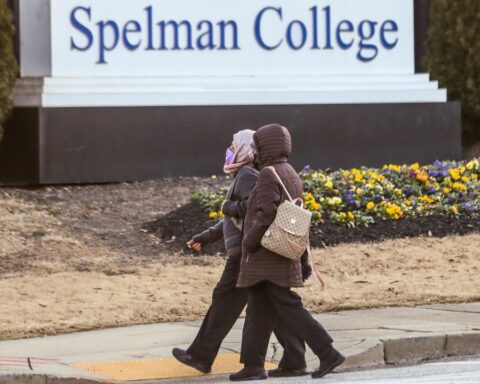The creation of the United States Army’s Diversity, Equity and Inclusion Task Force is a new collaboration between the United States Army and HBCUs. The Office of the Assistant Secretary of the Army for Acquisition, Logistics and Technology, or ASA (ALT), in coordination with Army Futures Command, held a virtual event to introduce this collaboration.
At the event, Secretary of the Army, John E. Whitley, pitched to HBCU educators and students the various opportunities available to them, including assistance with completing research grants and outreach programs. The upcoming xTech|HBCU prize competition for HBCU researchers was announced. Set for later this year, the contest will be the first of many future efforts to partner with HBCUs.
“America’s strength is derived in its ability to bring together a diverse group of people, their thoughts and their ideas,” said Phil Perconti, the Army’s chief scientist, in an interview. “Research is vital for the future of the Army. Scientific research is the fourth part of the Army, because it will fight on the battlefield of tomorrow,” he said, adding that some key battles will be waged in the cyber realm.
Recently, in another collaborative effort, Adrienne Raglin, a researcher at the U.S. Army Combat Capabilities Development Command, known as DEVCOM, visited students at Spelman University and briefed them about her work. She discussed the laboratory’s efforts with AI-driven decision support technology and computational mission inferencing.
The Office of the Secretary of Defense artificial intelligence and machine learning initiative and other collaborative efforts such as Raglin’s are ways to match interested students and faculty with the DEVCOM Army Research Laboratory (ARL) for future collaborations.
“Discussing ongoing advances in artificial intelligence in key areas, such as artificial reasoning, will increase awareness of the potential of intelligent…” Raglin said. The presentation focused on three main areas: adaptive decision making to isolate risk and undesired outcomes, multi-agent interaction to determine intelligent agents’ behaviors and context awareness exploration to automate generated decisions and overall courses of action.
“I view a multidisciplinary approach as a vital way for these areas of research to continue to evolve and become much more impactful,” Raglin said. “By inviting students with different interests to potentially collaborate with us, we open the door for innovation and create opportunities for student involvement in research they may not have considered previously.”
The Army has commonly been associated with its infantry, armored and artillery formations, but Whitley and others are striving to emphasize the importance of research and technology as a weapon of the future. Whitley said, “There is a focus on cyber writing code, but the Army needs to establish partnerships with colleges to build on its cyber capabilities, because cyber is embedded in everything we do.”
The secretary is hopeful that its academic partnerships will grow, and Raglin, too, is excited about the opportunities that the future holds for ARL and its collaborative partners. “As our organization continues to support these efforts, we will not miss the windows of opportunity to incorporate this wealth of raw talent and ideas that these students will bring,” Raglin said.
ARL is managing a cooperative agreement from the Department of Defense to support the school’s Center of Excellence for Minority Women in STEM. Affiliated with the University’s Office of Research, Innovation and Collaboration, the center is the first of its kind and serves as the hub for all science, technology, engineering and math undergraduate research and training activities at Spelman.





